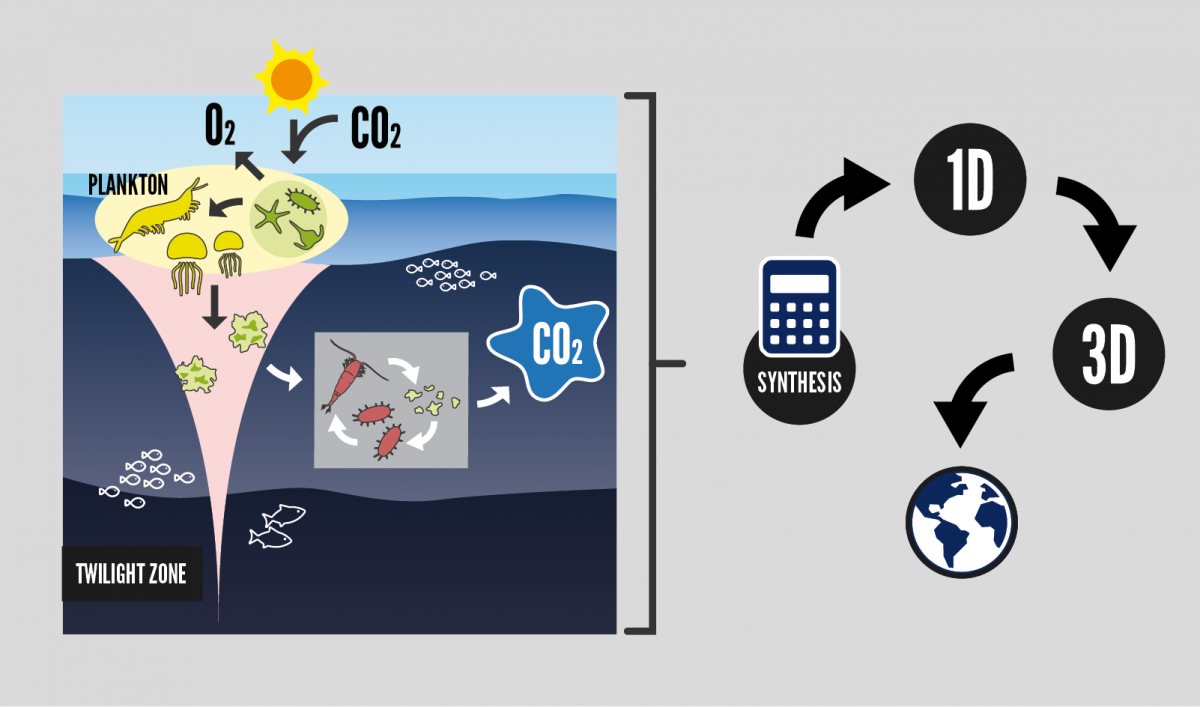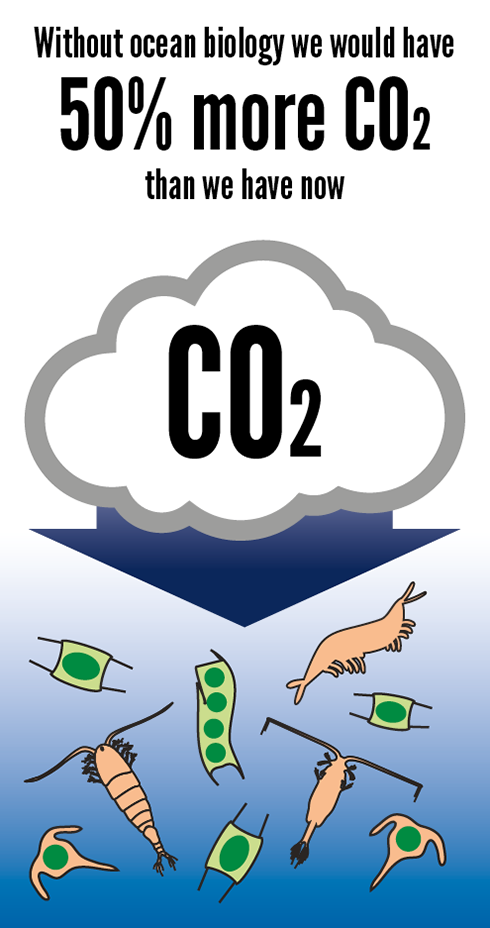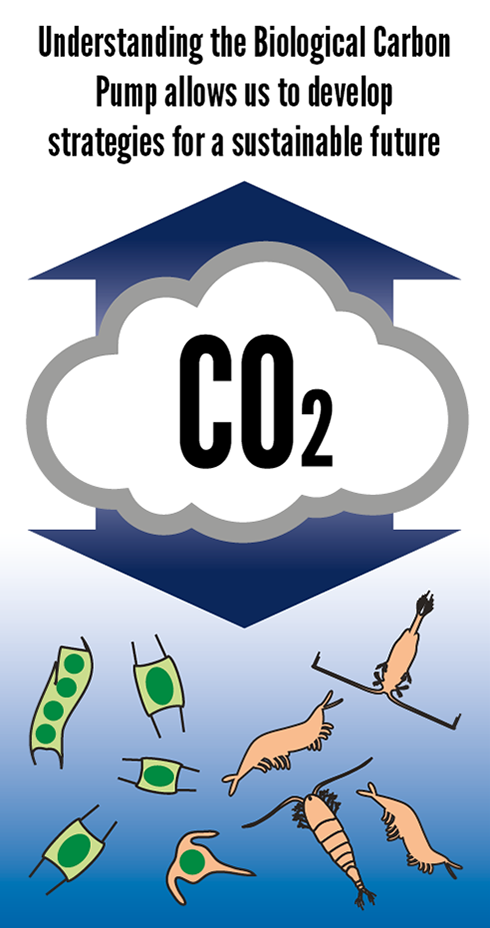
Theme 1: Carbon supply to the twilight zone
We will measure sinking particles and the carbon they contain using a range of methods including neutrally buoyant sediment traps and the marine snow catcher. We will also use a range of novel optical devices that measure particle size and sinking rate.
Theme 2: Pelagic biogeochemistry
To understand what is sinking into the twilight zone, we need to know what lives in the surface ocean. This theme will measure primary production, nutrient concentration and the composition of plankton in the surface ocean.
Theme 3: Respiration in the twilight zone
Much of the organic matter that sinks from the surface ocean to depth is converted back to CO2 via respiration. This theme will use novel techniques to measure the respiration of microbes and zooplankton in the twilight zone.
Theme 4: Twilight zone food web
We know very little about who eats who in the twilight zone. This theme will try to disentangle this food web, thus providing novel insight into the twilight zone community structure.
Theme 5: Synthesis
Our field work will produce a huge amount of unique new data, but to get the most out of it, it needs to be synthesised to answer our main question: Do sinking particles supply all the food needed by the organisms living in the twilight zone?
Theme 6: One-dimensional modelling
Currently, computers are not powerful enough to represent every organism and every process individually in detail. Instead, we need to simplify our world: sufficient detail to capture the complexity, yet sufficient simplicity to keep the computational costs low. This theme will try to find this compromise.
Theme 7: 3-dimensional modelling
Our field work will happen at 4 sites across the South Atlantic, but we really want to know about how the Biological Carbon Pump operates globally. To do so, we will combine our 1D model (theme 6) with a model of the global ocean and its circulation.
Theme 8: The future ocean
The final stage of COMICS is to explore how future changes in, for example, temperature will affect the Biological Carbon Pump and, as a result, ocean carbon storage. This theme will explore how the Biological Carbon Pump will respond to climate change and so feed into the next IPCC assessment.
COMICS will improve our understanding of global climate change


